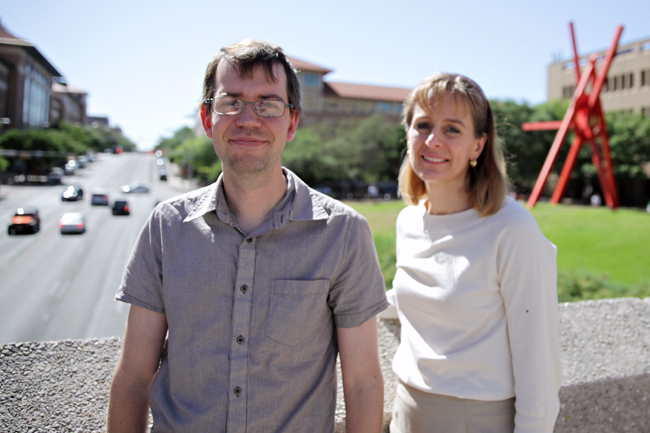According to UT researchers, driverless cars, or shared autonomous vehicles, could start driving people around the country in fewer than 10 years.
Civil engineering professor Kara Kockelman and graduate student Daniel Fagnant have worked with the Center for Transportation Research in the Cockrell School of Engineering to research the impacts these vehicles would have when implemented as a fleet car sharing program, similar to the ZipCar and Car2Go programs operating in Austin.
“Automated vehicles are coming, and our society needs to be ready,” Kockelman said. “Early research is critical in anticipating their impacts.”
Today, the automated vehicles would cost approximately $100,000 more than the average car, Kockelman said. If these cars were used in a car sharing program, though, people would no longer have to own and maintain personal vehicles, which make up a large share of household expenditures, according to Kockelman.
“They would have access to a very smart car, allowing them to work or sleep en route — in the longer term,” Kockelman said.
Kockelman expects these vehicles to be fuel efficient and available in different sizes depending on the length of the trip, while also providing transportation to those who might not be able to provide it for themselves.
“Smart vehicles allow for persons with driving disabilities to continue accessing key services and important social activities,” Kockelman said.
Kockelman said in the early years of the program the traveler would have to be licensed to drive in case any issues should arise.
To see how the shared program would function in Austin, Fagnant said he and Kockelman are simulating how the cars would get around Austin to pick people up and drop them off at request.
“Currently, we are simulating around 60,000 trips served by approximately 2,000 SAVs that travel around Austin picking travelers up, dropping them off and relocation to more favorable locations when not in use,” Fagnant said. “From these simulations, we examine resulting changes in travel patterns, implications for household vehicle ownership and life-cycle pollutant emissions impacts.”
Communication studies senior Victoria Collatos said she used ZipCar frequently when she studied at Univeristy of California-Los Angeles and needed a way to get off campus. Collatos said she would enjoy using a shared autonomous vehicle, especially if she could use the travel time to work.
“If it is proven to be safe, then I think that is awesome,” Collatos said. “I feel that traveling definitely cuts into productivity time.”
Correction: An earlier version of this article misstated the effect of driverless vehicles on household expenditures, the capacity of the vehicles and the way in which driverless car share programs would be rolled out.















